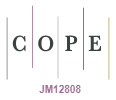Emissions Reduction Visual Presentation R12: Towards an improved understanding of fault systems behaviour in a CCS project
Ludovic P. Ricard A *A

Dr Ludovic Ricard is a Senior Research Engineer at CSIRO. He holds a PhD in Earth Sciences from the University of Paris XI. He joined CSIRO as Reservoir Engineer in 2009 and worked for the last 10 years on a wide range of geological carbon sequestration projects with focus on reservoir modelling and monitoring and verification technologies. He has expertise and interests in distributed fibre optic sensing and reservoir monitoring. Since 2019, he is operating the CSIRO In-Situ Laboratory research facility. |
Abstract
Emissions Reduction Visual Presentation R12
A key uncertainty when investigating potential carbon capture and storage (CCS) projects is the role of faults and their interactions with the injected CO2. While it is anticipated that CCS projects will, at least in the short-term, focus on avoiding the interaction between the injected CO2 and fault systems, the likelihood of a storage projects encountering a fault system would increase, as the number of storage projects increases. While faults have been significantly studied for petroleum production, the role of faults for CCS projects is yet to be better understood: friend or foe? In the later context, analytical and desktop studies have been performed, yet limited understanding exists at pilot scale. In this work, we focus on field scale investigation at the CSIRO In-Situ Laboratory research facility (ISL), Western Australia, where an extensive fault system, the F10 fault, has been drilled through. A shallow CO2 controlled release test suggested that the fault did not significantly affect CO2 migration. More recently, two new 2D seismic lines were acquired and existing 3D seismic survey was reprocessed in 2023 and the Harvey 6 well intersecting fully the fault was drilled in March 2024. In March 2025, a vertical injection well will be drilled with the intent to inject fluid into the fault. This new data provides great insights on the fault structure and the planning of a deeper injection experiment which is discussed.
To access the Visual Presentation click on the link on the right. To read the full paper click here
Keywords: carbon capture and storage, CO2 storage, faults, fibre optics, migration, monitoring, pressure, risk.
 Dr Ludovic Ricard is a Senior Research Engineer at CSIRO. He holds a PhD in Earth Sciences from the University of Paris XI. He joined CSIRO as Reservoir Engineer in 2009 and worked for the last 10 years on a wide range of geological carbon sequestration projects with focus on reservoir modelling and monitoring and verification technologies. He has expertise and interests in distributed fibre optic sensing and reservoir monitoring. Since 2019, he is operating the CSIRO In-Situ Laboratory research facility. |


